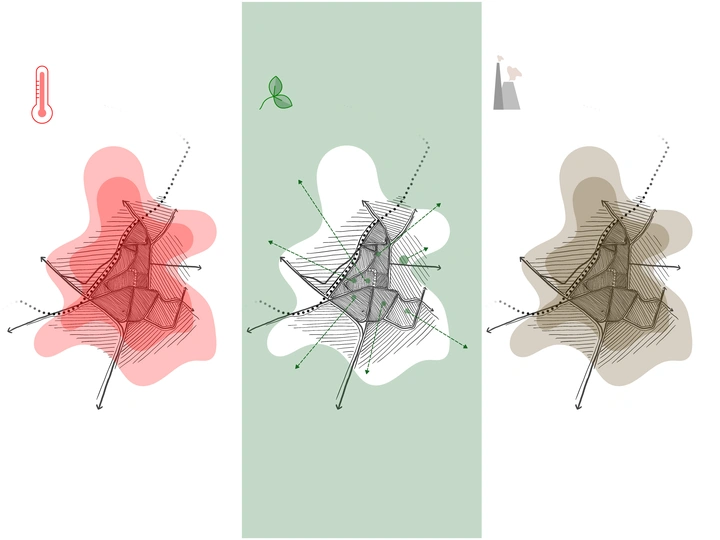Prishtina's invisible Three-way Island phenomenon

I am Gentiane Thaci, born in the small but beautiful country of Kosovo. My academic background consists of a bachelor’s degree in Architecture and Urban Planning at University of Prishtina, where I was consistently awarded excellence scholarships for outstanding performance. Following graduation, I gained three years of valuable experience at architectural firms like 'New Dimension' and 'Bashkimi Projekt' in Kosovo, along with remote work for 'Busenhart & Partner' in Switzerland. During this time, I worked on interesting projects of residential and economic buildings, revitalization projects and open space design, enhancing my design creativity, work ethic, time management, networking and software skills. The latter includes photo and video-editing software through my passion for film and photography, bringing innovation to the firms for new project presentation methods.
During my freelance work, I pursued my growing interest for sustainable architecture through city planning and landscape architecture, ignited by my bachelor thesis of revitalizing Prizren's City Park and the workshops I participated in for designing public spaces in the cities of Kosovo, organized by UNDP, CHwB, UN-Habitat, and AIA. Consequently, I pursued an International Programme of Landscape Architecture in Germany where I graduated with Master of Engineering. My most successful projects of the master studies were designing a future for the river “Moosach” in Freising, “Rimini 3.0” a coastal Italian city project, and peaking at my success with the master thesis which is also the proposal of this application. During my masters, I also did a student internship at 'Grabner Huber Lipp' Landscape Architecture Firm.
To conclude, I consider myself a ‘forever student’, eager to both build on my academic and practical foundation in terms of architecture and landscape architecture, but also stay in-tune with the innovative ways of creating.
Prishtina's rapid post-war expansion and the lack of proper urban planning during that time led to an urban sprawl, which created severe environmental challenges. Motivated by the lack of studies done for this three-way approach, this proposal aims to tackle Prishtina's Urban Heat Island, air pollution, and biodiversity loss by analysing the factors causing them and finding strategic nature-based solutions to mitigate them.
The proposed solutions involve integrating principles of landscape architecture, urban planning, and environmental conservation. Some of the key components of the proposal include:
- The transformation of Prishtina into a compact, polycentric city, countering excessive land consumption and urban sprawl.
- Conserving valuable green spaces as evergreen areas, adding new ones and connecting them through green corridors, promoting biodiversity and combating the Urban Heat Island effect. Re-introducing blue elements to the city.
- Promoting eco-friendly means of transport through better bus infrastructure, outer rings of the city to decrease the transit use of the city and the creation of car-free zones within the city center.
- Circular economy principles to minimize waste and promote sustainable resource management. This includes initiatives such as waste-to-energy projects and organic farming practices.
- Recognizing the importance of community engagement through citizen participation. A big portion of this proposal analysis is based on the citizens' answers to these challenges.
The proposal has the potential to significantly impact Prishtina's urban landscape, creating a more livable and resilient city for current and future generations. Being a top-down approach, it allows for each aspect to be further zoomed in and analyzed in collaboration with different stakeholders such as the municipality, environmental organizations, citizens and different experts. Moreover, many principles can then be used for the other cities of Kosovo.